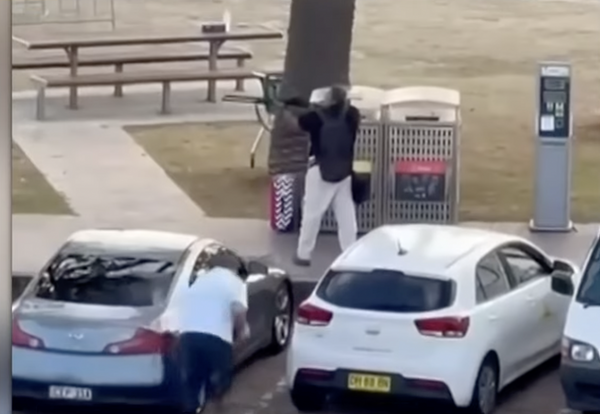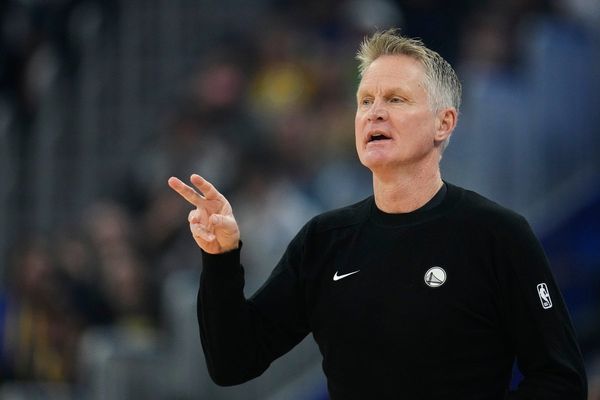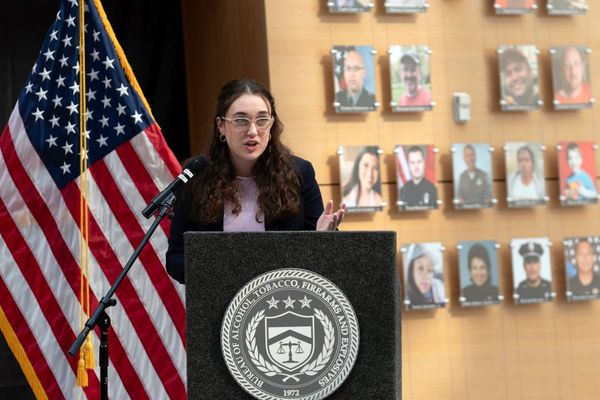-Photo-Credit-Helen-Murray-72.jpg?width=1200&auto=webp&crop=3%3A2)
Tables turn, morally and sexually, in this glib two-hander where fading political journalist Pierre reluctantly interviews young, beautiful influencer-turned-actress Katya. A lack of chemistry between Robert Sean Leonard (from House, among other things) and Paten Hughes is only part of the problem.
Pierre’s casual disdain for the assignment is overstated. Her taunting vampiness is overcooked. There’s a crisis unfolding in Washington from which he’s been diverted: he hasn’t seen her TV series or her blockbuster franchise films, only a movie called Bromeo and Juliet in which she performed the balcony scene topless. The deeply improbable shifts in mood and attitude between them feel mechanical, constructed to explore the stories people tell about themselves, the faces they put on.
The stage version has been adapted by Dutch-British director Teunkie Van Der Sluijs from a 2003 film by the controversial Dutch director Theo van Gogh, who was murdered by an Islamist in 2004. The movie was remade in 2007 with Steve Buscemi directing himself opposite Sienna Miller. You can see how the rollercoaster plot and facile, smart-aleck dialogue would function better on screen.
-Photo-Credit-Helen-Murray-185.jpg)
On stage you miss the cuts and close-ups, and the action has necessarily been moved to a single location. Would Katya, a girl with a fanatical audience who calls herself “the secretary of state for teenage boys’ wet dreams”, really invite a grizzled stranger with a notepad into her Brooklyn loft?
Well, maybe, since authenticity is at the heart of the brand she built online before moving into acting. At one point she breaks off from sparring with Pierre to livestream her fanbase, encouraging them to be “unapologetically themselves” and “reciprocate honesty with vulnerability”. She has more followers than his New York Courier has readers, though the biography she’s sold to them, including a Georgian mother, is false.
In the films Katja/Katya is a soap actress. Updating her into an online icon allows for some clever video design (by the Manchester studio idontloveyouanymore), with film clips, social media posts and screen alerts projected onto the back wall of Derek McLane’s realistic set. But the modernising of the story is also awkward: Pierre’s professional and ethical crisis turns on events in Ukraine, which bear no relation to the current situation there.
But, okay, let’s accept this as an artificial story about the artificial process of media interviews and the selling of stories. (As an aside, I’ve interviewed countless glamorous people and not one of them has danced barefoot or snorted cocaine in front of me. Dammit.) In this frame, Paten Hughes’s performance is interesting, as it’s all surface – every attitude a pose, every riposte a polished one-liner. Her movements are a choreographed burlesque of flirtation and her demonstration of different kinds of on-screen weeping is very funny.
-Photo-Credit-Helen-Murray-167.jpg)
Where her performance is heightened, Leonard’s is dull and deflated. Pierre should exude the self-importance of one who bears the weight of bearing witness: both I and my guest thought of the great war photographer Don McCullin. But Leonard’s Pierre has none of the heft required and comes across as merely a peevish old man. The dark secrets of his past and his betrayals of trust don’t ring true and therefore lack clout. Also, you can see them coming a mile off.
There’s a grinding inevitability to the way this 90-minute piece unfolds and the barrage of pat lines becomes wearing. “I can only be real in front of the camera,” Katya tells Pierre. “Reach doesn’t equal worth,” he prissily informs her – the dying cry of print media. His mouth, she sneers, tastes of “Scotch and failure”. If I deployed even a tiny number of the cliches used here in a celebrity interview, my editor would demand a rewrite.
Interview at Riverside Studios, until 27 September, riversidestudios.co.uk







